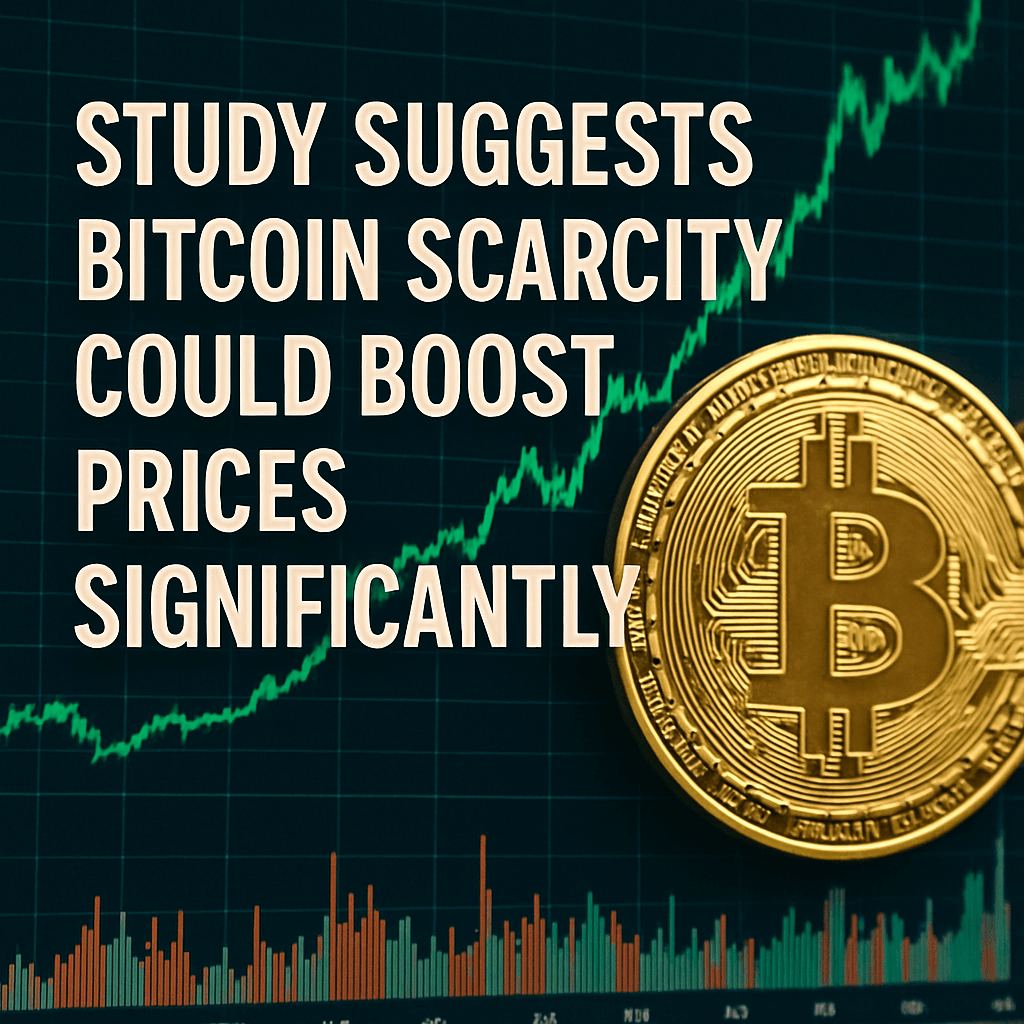Study Suggests Bitcoin Scarcity Could Boost Prices Significantly

As the liquidity of Bitcoin continuously tightens, a recent analysis by Sygnum Bank sheds light on the potential implications for the cryptocurrency’s price trajectory. The research, highlighted in the bank’s June 2025 Monthly Investment Outlook, indicates a notable 30% reduction in the liquid supply of Bitcoin over the past 18 months, as nearly 1 million BTC have exited exchanges.
Liquid Supply Decreases
According to Sygnum Bank, the decline in exchange balances—resulting in a decrease of approximately 1 million BTC—represents about 5% of Bitcoin’s total supply. This evacuation of coins from exchanges is typically indicative of long-term holding strategies, including cold storage and institutional capital inflow into Bitcoin. The exit of such a significant volume of BTC means traders now have a shrinking pool of coins to transact with. In economic terms, this tightening of supply could lead to heightened competition among buyers, thereby amplifying potential price fluctuations.
Long-Term Holdings and Market Implications
- Cold Storage and Institutional Buyers: The trend of Bitcoin leaving exchanges often signals it being allocated to cold storage, where tokens are held for extended periods to minimize risk.
- Impact of ETFs and Corporate Purchases: The entry of exchange-traded funds (ETFs) and corporate buyers tendering equity or debt to acquire Bitcoin further reduces liquid supply. These investors tend to adopt long-term strategies that decrease available Bitcoin for immediate trading.
When fewer coins are liquid, the market dynamics shift significantly, as the interplay of supply and demand can create larger price swings, particularly in bullish trends.
Institutional Adoption and Government Interest
Institutional interest in Bitcoin is on the rise, evidenced by the introduction of legislation allowing state-level reserves to hold Bitcoin. Three states in the U.S. have paved the way, with New Hampshire enacting its bill into law and Texas soon to follow suit. A third state is also making strides toward similar legislation, although specifics remain undeclared.
When public institutions like states start incorporating Bitcoin into their reserves, it generates immediate demand and sends a strong message about Bitcoin’s legitimacy as a store of value.
Additionally, international attention has turned toward Bitcoin, with the Pakistani government considering the establishment of Bitcoin reserves. In the UK, the Reform Party, presently leading in election polls, has committed to evaluating a similar initiative. This trend underscores a potentially transformative view of Bitcoin, perceived not just as an asset but a viable reserve currency.
Bitcoin’s Safe-Haven Status Strengthens
The ongoing uncertainty surrounding the U.S. dollar, exacerbated by growing concerns over national debt levels, is prompting a shift in investor sentiment toward Bitcoin. During May, as Treasury prices dipped significantly amid fears of rising debt, cryptocurrencies—particularly Bitcoin and gold—experienced a notable uptick in investment interest.
Bitcoin is gaining traction as a hedge against dollar depreciation. Data from Sygnum Bank illustrates that when Treasury bonds show volatility, inflows into Bitcoin rise, indicating that investors are seeking alternative safe-haven assets. The scale of Bitcoin’s upward movements has, on average, been documented to exceed that of its decline, suggesting increased confidence among institutional players willing to absorb price dips.
Renewed Optimism in Ethereum
While Bitcoin garners attention, Ethereum is also rebounding from a recent slump, primarily fueled by the successful implementation of the Pectra upgrade. This upgrade has led to increased transaction fees and reinvigorated interest from major financial institutions exploring tokenization platforms built on top of Ethereum and its layer-2 networks. As increased activity on Ethereum often drives demand for Bitcoin, a resurgence in Ethereum’s ecosystem could indirectly bolster Bitcoin’s market position.
Conclusion: Future Outlook for Bitcoin
As Bitcoin continues to demonstrate signs of scarcity driven by institutional adoption and governmental interest, along with its increased appeal as a hedge against market volatility, the potential for significant price appreciation exists, contingent on sustained demand. With ongoing structural changes in how Bitcoin is perceived by both institutional and state actors, the cryptocurrency market may be on the cusp of transformative developments.
Investors and market analysts alike should monitor these trends closely, as they hold significant implications for market dynamics and the future trajectory of Bitcoin in the financial landscape.